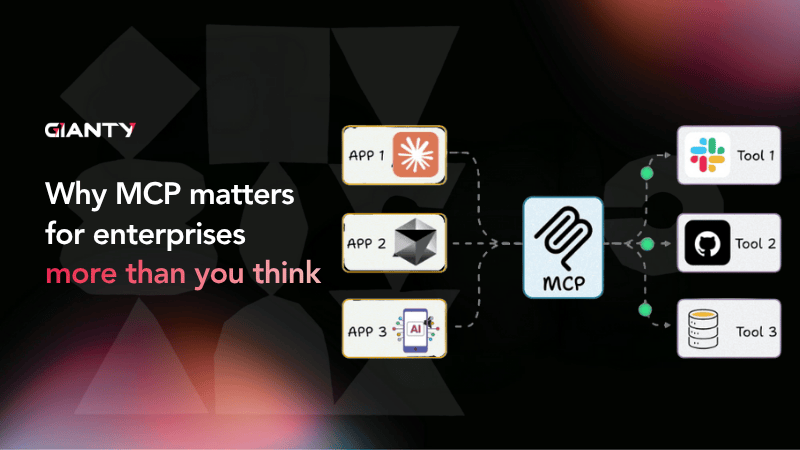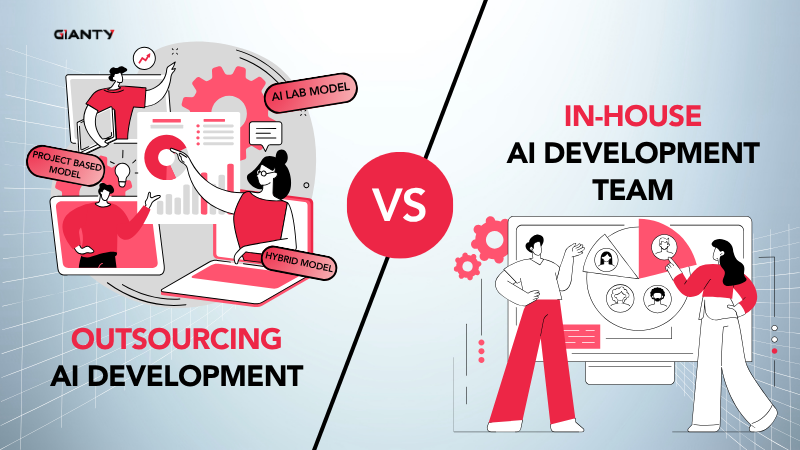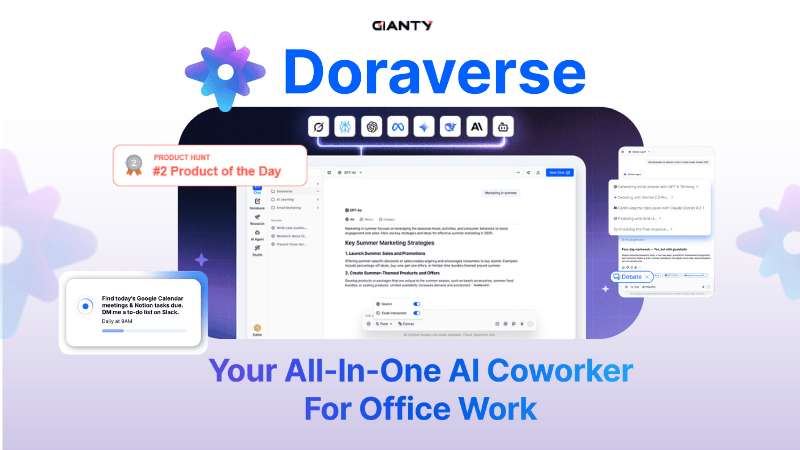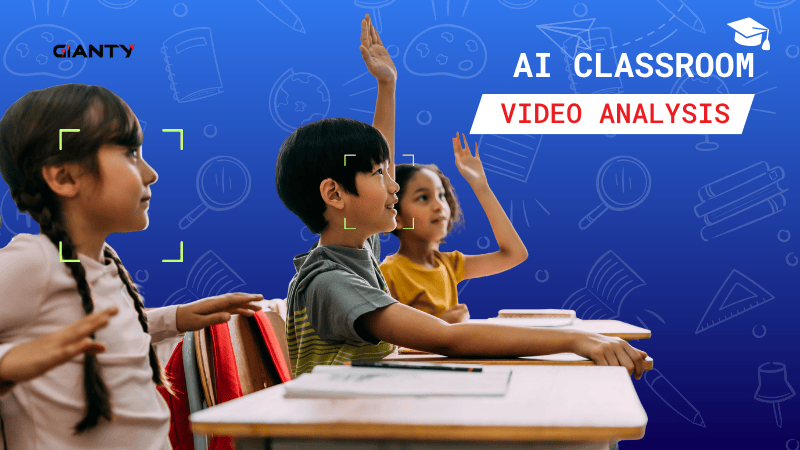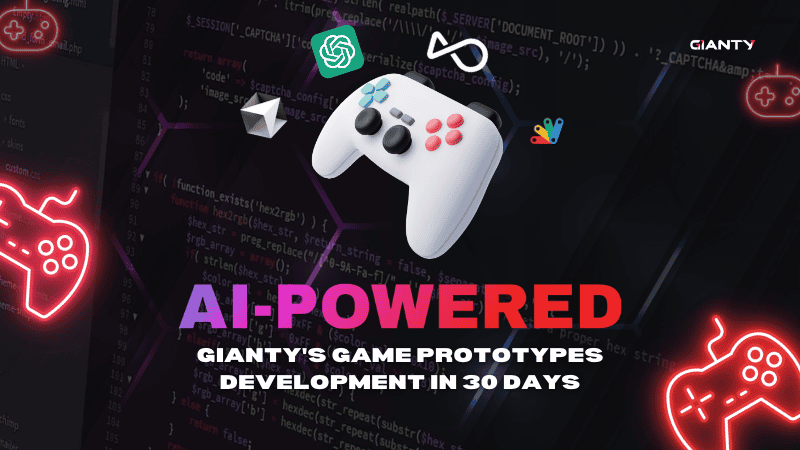Many businesses today find themselves tangled in chaotic automation workflows that create more headaches than help. Fortunately, AI automation offers a transformative solution.
No more disconnected tools, duplicated efforts, and missed deadlines that turn what should be seamless processes into frustrating bottlenecks, draining productivity and slowing growth.
No more of this disorder that not only wastes time but also undermines employee morale and business agility.
By intelligently connecting systems and automating routine tasks, AI Automation brings much-needed structure and transparency to these tangled workflows, enabling teams to work smarter, faster, and more confidently.
Rather than scrambling to keep up, employees can focus on strategic priorities and deliver faster higher-quality results. This transition from chaos to clarity is a strategic necessity for companies competing in a digital age.
Automation Workflow vs. Chaos: Why Your Team Needs Structure and Clarity
Automation workflow chaos often emerges when business processes are spread across multiple disconnected tools such as separate CRM systems, project management platforms, communication apps, and finance software, creating fragmented automation workflows that hinder productivity rather than enhance it.
Many organizations rely on a patchwork of software systems that don’t communicate well, forcing employees to manually transfer data, re-enter information, or constantly switch between platforms.
As these inefficiencies multiply, teams find themselves trapped in a cycle of burnout and declining productivity. Deadlines become ambiguous, task ownership blurs, and priorities become unclear.
Without clear, well-structured automation workflows, teams duplicate work unknowingly or drop tasks entirely, leading to costly mistakes and missed opportunities.
Common signs that your automation workflows are chaotic include:
- Use of multiple, unconnected platforms leading to siloed data: When different departments use isolated tools without integration, vital information gets trapped in silos. This lack of unified data reduces transparency and hampers cross-team collaboration.
- Frequent duplication of tasks due to lack of visibility: Disconnected systems make it difficult to track who is responsible for what, resulting in redundant work that wastes time and resources.
- Tasks getting dropped or forgotten amidst poor coordination: Without structured workflows, important steps can be missed, delaying projects and damaging client relationships.
- Unclear accountability and ownership across teams: Ambiguous roles and responsibilities lead to confusion, slow decision-making, and ineffective execution.
- Inconsistent processes causing errors and delays: When workflows aren’t standardized, teams may approach similar tasks differently, leading to quality issues and rework.
These symptoms of chaotic automation workflows restrict an organization’s ability to grow and adapt. Inefficient workflows slow responsiveness, increase operational costs, and reduce overall competitiveness in an increasingly digital marketplace.
How AI Automation Brings Structure and Clarity to Automation Workflows
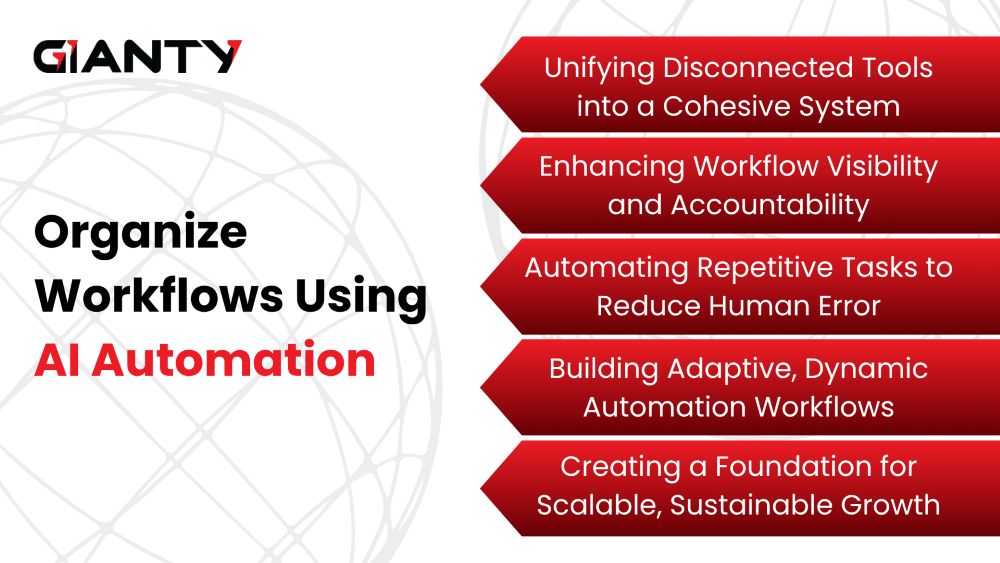
AI automation plays a transformative role in solving the inefficiencies of fragmented systems and disconnected processes. Understanding where AI can drive ROI helps address these inefficiencies.
When you focus on business outcomes, rather than just tools, AI delivers measurable benefits that transform workflows and when implemented effectively, it replaces disjointed efforts with streamlined, transparent automation workflows that can boost productivity by about 40%.
Below is a breakdown of how AI automation creates structure and clarity across every level of your business processes:
1. Unifying Disconnected Tools into a Cohesive System
One of the most common causes of workflow breakdown is tool fragmentation. Businesses often use an array of specialized platforms that aren’t integrated such as CRM software, project management tools, email marketing apps, and billing systems.
When these systems don’t talk to each other, employees are forced to manually move information from one tool to another, often duplicating work and introducing errors.
AI automation resolves this by connecting your tools into a single, unified ecosystem. With integrations powered by AI, businesses can:
- Seamlessly transfer data between apps in real time.
- Automate updates across platforms to avoid manual re-entry.
- Trigger workflows based on events happening in connected tools.
This creates end-to-end automation workflows that are efficient, consistent, and easy to monitor. Instead of chasing down data or switching between tools, teams stay focused on execution by knowing everything is synced and centralized.
2. Enhancing Workflow Visibility and Accountability
Even with the right tools in place, teams often lack visibility into who’s doing what, when tasks are due, or where bottlenecks are forming. This lack of transparency causes delays, missed deadlines, and duplicated efforts.
AI automation introduces real-time visibility and transparency to every aspect of the workflow. Automated tracking and intelligent dashboards give managers and team members a clear, always-up-to-date view of:
- Task status and progress indicators.
- Deadlines, dependencies, and upcoming risks.
- Assigned owners and role responsibilities.
AI can also send alerts and notifications when something is at risk of falling behind, making it easier to take corrective action early. When everyone can see the full scope of work, accountability becomes built-in without the need to micromanage or chase down answers.
3. Automating Repetitive Tasks to Reduce Human Error
Not only are repetitive tasks time-consuming, but they are also where most human errors happen, especially in high-volume or fast-moving environments.
Copying data between spreadsheets, sending routine emails, and logging updates take up valuable hours and contribute little to strategic progress.
By leveraging AI automation, organizations can offload these tasks to intelligent systems that work faster and more accurately than any human could. Common use cases include:
Social Content Generation & Publishing
ChatGPT, Google Sheets, and n8n can work together to automate the entire social media content creation and publishing process.
By simply inputting content requirements into a Google Sheet, the system uses AI to generate tailored post content, automatically formats it for different platforms, sends it for approval via email, and publishes it instantly once approved.
This streamlined workflow is ideal for marketing teams, agencies, and solo creators who want to save time, maintain consistency, and focus more on strategy rather than repetitive tasks.
Invoice Processing Automation
Gmail, Google Drive, Google Sheets, and AI can be connected to fully automated invoice processing.
Incoming invoice emails are captured and uploaded to Google Drive, where AI extracts key data that is then automatically logged into Google Sheets—transforming unstructured emails into organized, actionable data in seconds.
This smart, scalable automation streamlines accounting workflows, saving time and reducing errors.
All this allows teams to focus on tasks that require creativity, problem-solving, or relationship-building – things AI can’t replicate, but can support.
4. Building Adaptive, Dynamic Automation Workflows
One of the limitations of traditional automation is that it’s rule-based and inflexible. It works well – until something changes. But in real-world business environments, things change all the time: priorities shift, resources get reassigned, and customer needs evolve.
AI-powered automation workflows are dynamic. They’re built to adapt based on changing inputs, logic, or business rules. For example, AI can:
- Adjust task priorities based on deadlines or workload.
- Reroute approvals if a manager is unavailable.
- Skip or trigger workflow steps conditionally.
- Learn patterns over time and make recommendations.
This intelligent adaptability ensures that workflows stay relevant and optimized—even as the business environment evolves.
5. Creating a Foundation for Scalable, Sustainable Growth
As businesses grow, their workflows naturally become more complex. What worked for a 5-person team may break down with 50 employees. Without scalable systems in place, growth can actually lead to more chaos.
AI automation makes it possible to build scalable automation workflows that grow with the organization. With modular, flexible design, AI-driven systems can:
- Handle increasing volumes of data and transactions.
- Integrate new tools or departments without starting from scratch.
- Support advanced logic or conditions as business needs evolve.
Because many AI automation platforms use no-code or low-code interfaces like Zapier, Make, or n8n, non-technical teams can contribute to and maintain workflows, reducing IT bottlenecks and accelerating innovation.
Building a Sustainable Automation Strategy
However, simply having access to these tools isn’t enough. To implement automation effectively and ensure long-term value, businesses need a structured approach that balances strategy, technical execution, and continuous improvement.
Many companies like GIANTY follow a lifecycle that helps organizations move fast without losing sight of quality, business alignment, or scalability:
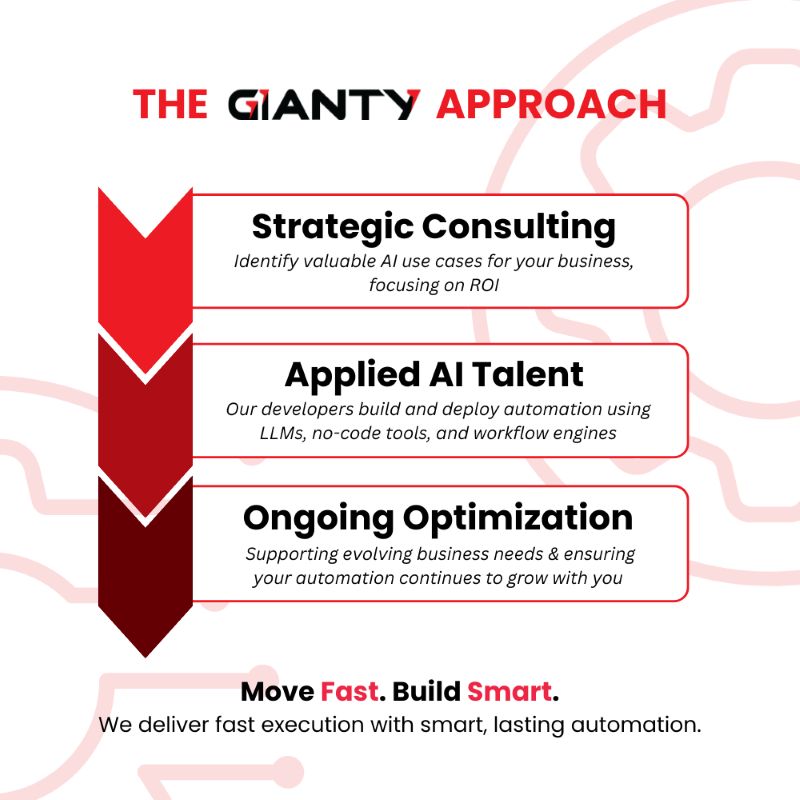
1. Plan: Identify High-Impact Use Cases
Before launching into development, successful teams take time to identify the most valuable use cases for AI automation within their business.
This involves evaluating automation workflows for inefficiencies, manual bottlenecks, and repetitive processes that automation could replace or enhance.
To ensure meaningful outcomes, each use case should be aligned with clear business goals, such as accelerating time-to-market, reducing costs, or improving customer satisfaction.
Aligning AI automation with these goals not only drives measurable improvements but also maximizes ROI, ensuring every initiative delivers real value.
2. Build: Develop with Smart Tools and the Right Talents
With the right tools, businesses can build and launch workflows quickly. AI automation can utilize many powerful tools designed to streamline and scale business processes such as n8n, Zapier or other AI-powered workflow engines like ChatGPT.
However, when internal resources are limited or deeper customization is needed, external AI automation experts can accelerate delivery and help design more advanced, scalable solutions.
This mix of tools and specialized talents ensures automation is both effective and sustainable.
3. Operate: Monitor and Evolve
The most successful AI automation efforts don’t stop after deployment. Ongoing optimization is essential for long-term value. As business needs evolve, so should your automation workflows.
Monitoring performance, gathering user feedback, and refining automation over time helps prevent drift, identify new opportunities, and keep systems aligned with real-world operations.
Key Criteria for an Effective AI Automation Workflow
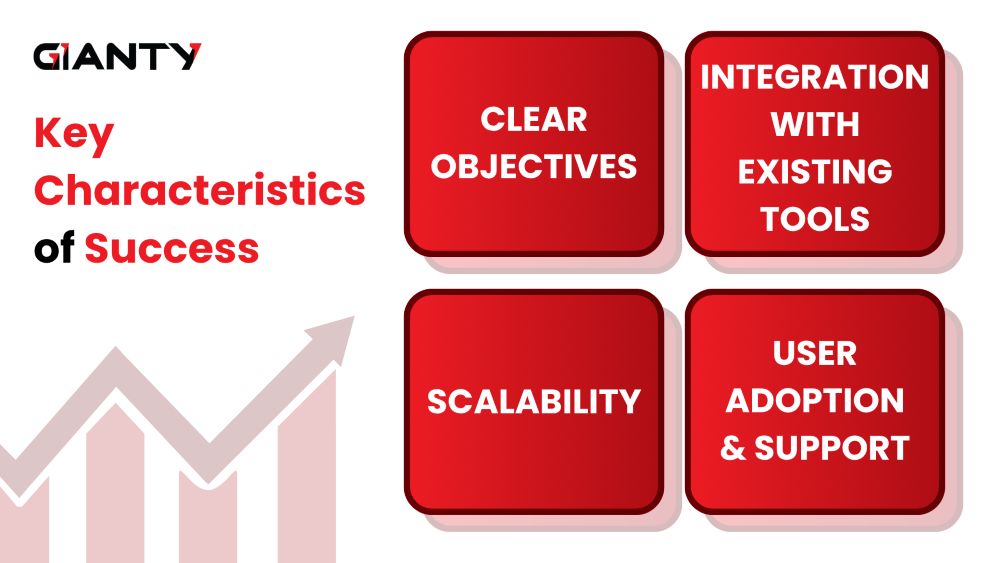
Successful AI automation workflows share several critical characteristics:
- Clear objectives: Define precise business outcomes before selecting automation tools. Focus on goals like reducing errors, speeding up delivery, or improving customer experience.
- Integration with existing tools: Choose AI automation platforms that work seamlessly with your current technology stack to avoid disruptions.
- Scalability: Design workflows that can grow with your business and adapt to evolving needs without requiring a complete overhaul.
- User adoption and support: Provide comprehensive training and support to ensure teams embrace automation confidently and use it effectively.
By meeting these criteria, businesses can build robust automation workflows that deliver sustainable value.
Don’t Fall Behind!
AI automation and automation workflows are revolutionizing how businesses operate by turning fragmented, chaotic processes into streamlined, transparent systems.
When implemented strategically, AI automation enhances efficiency, reduces errors, and boosts employee satisfaction, empowering teams to focus on innovation and growth.
Embracing AI automation today is essential for any business looking to create structured workflows that drive competitive advantage and long-term success.
And with GIANTY as your partner, you gain more than just tools! You gain clarity, control, and a path to long-term transformation!



